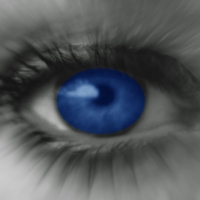 Gene therapy was first conceptualized in 1972, with the authors urging caution before commencing gene therapy studies in humans. The first FDA-approved gene therapy experiment in the occurred in 1990 in U.S., when Ashanti DeSilva was treated for ADA-SCID. Although early clinical failures led many to dismiss gene therapy as over-hyped, clinical successes in 2006–2011 have bolstered new optimism in the promise of gene therapy.
Gene therapy was first conceptualized in 1972, with the authors urging caution before commencing gene therapy studies in humans. The first FDA-approved gene therapy experiment in the occurred in 1990 in U.S., when Ashanti DeSilva was treated for ADA-SCID. Although early clinical failures led many to dismiss gene therapy as over-hyped, clinical successes in 2006–2011 have bolstered new optimism in the promise of gene therapy.
Gene Therapy has markedly improved vision in both eyes in three women who were born virtually blind. The patients can now avoid obstacles even in dim light, read large print and recognize people’s faces. The operation, researchers predict, should work even better in children and adolescents blinded by the same condition.
There was some improvement after the genetic fault in one eye was corrected four years ago. Now, one woman has described her joy at seeing her children’s faces, after her second eye was treated. The research increases hopes that gene therapy can be used in a range of eye conditions, said a UK expert
The three have Leber & Congenital Amaurosis (LCA), a rare inherited disease caused by defects in a gene encoding a protein needed for vision. It appears at birth or in the first months of life, leading to severely impaired vision, involuntary eye movements and poor night vision. The disorder can be caused by mistakes; in more than 10 different genes, prevents normal function of the retina; the light-sensitive layer of cells at the back of the eye.
The US researchers revealed in 2008 that 12 people with LCA had recovered some vision after being injected in one eye with an engineered virus carrying the gene RPE65. In a follow-up study they treated the other eye of three of them, and found it improved their sight even more. The subjects could see better in dim light and two were able to find their way around obstacles.
Dr Manzar Ashtari, from The Children’s Hospital of Philadelphia, who carried out the brain scans, told the BBC: We saw the brain gets activated – the brain after treatment responded to the visual stimuli.
Incredibly valuable
One of the three patients who took part in the clinical trial, Tami Morehouse, told the BBC how her vision gradually returned. Now, she can see well enough to read or drive a car, she can now make-out her children’s faces, watch them play baseball and see the light change over Lake Erie, where she lives.
Any amount of vision that you can get, when you have almost nothing is incredibly valuable.
The researchers now hope to treat the second eye of the remaining nine patients, and extend the clinical trial.
The early results of this small scale trial are encouraging, but clearly, a lot more research is needed to maximise the benefits of gene therapy techniques and understand how they can then be turned into effective treatments for a variety of more common degenerative eye conditions.

Wow, fantastic blog format! How lengthy have you ever been running a blog for?
you made blogging look easy. The full glance of your web site is magnificent, as neatly
as the content material! You can see similar here e-commerce
Your point of view caught my eye and was very interesting. Thanks. I have a question for you.
Your article helped me a lot, is there any more related content? Thanks!
Can you be more specific about the content of your article? After reading it, I still have some doubts. Hope you can help me.
Can you be more specific about the content of your article? After reading it, I still have some doubts. Hope you can help me.
Your article helped me a lot, is there any more related content? Thanks!
专业构建与管理谷歌站群网络,助力品牌实现全域流量的强势增长。谷歌站群
Tham gia cộng đồng game thủ tại Go88 để trải nghiệm các trò chơi bài, poker phổ biến nhất hiện nay.
利用强大的谷歌蜘蛛池技术,大幅提升网站收录效率与页面抓取频率。谷歌蜘蛛池
iwin – nền tảng game bài đổi thưởng uy tín, nơi bạn có thể thử vận may và tận hưởng nhiều tựa game hấp
Với giao diện mượt mà và ưu đãi hấp dẫn, MM88 là lựa chọn lý tưởng cho các tín đồ giải trí trực tuyến.
kuwin sở hữu kho game đa dạng từ slot đến trò chơi bài đổi thưởng, mang đến cho bạn những giây phút giải trí tuyệt vời.
Thank you for your sharing. I am worried that I lack creative ideas. It is your article that makes me full of hope. Thank you. But, I have a question, can you help me?